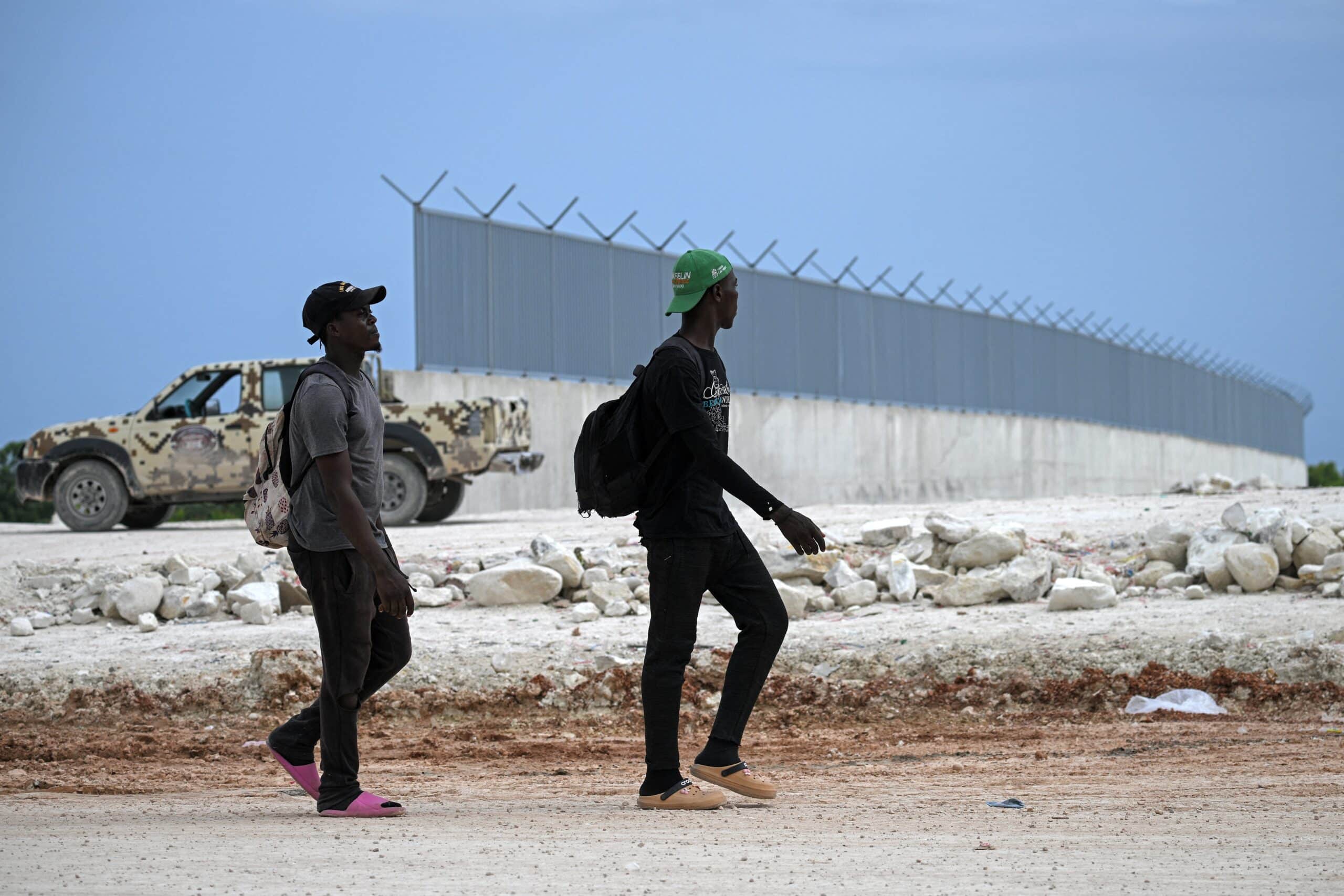
Haitian citizens walk past the border wall being built in the Dominican Republic-Haiti border, in Pedernales, Dominican Republic on May 15, 2024. FILE PHOTO/Agence France-Presse
SANTO DOMINGO — The Dominican Republic unveiled a plan Wednesday to start expelling 10,000 undocumented Haitians a week as part of a crackdown on migration from its troubled neighbor.
“This operation aims to reduce the excessive migrant populations detected in Dominican communities,” presidential spokesman Homero Figueroa said, adding the expulsions would start “immediately” and be done “according to strict protocols that ensure respect for human rights.”
The government said it took the decision in light of the international community’s “slowness” in restoring stability in Haiti, large parts of which have been overrun by criminal gangs.
READ: Dominican Republic president firm on closing all borders with Haiti
After many months of delay, a UN-approved force led by Kenya has been sent to Haiti to try to restore order.
“We warned at the United Nations that either it and all the countries that had committed themselves (to helping Haiti) act responsibly in Haiti, or we will,” President Luis Abinader said.
Since coming to power in 2020, Abinader has taken a tough line on migration from destitute and violence-plagued Haiti.
He built a 164-kilometer (102-mile) concrete wall between the two countries and promised to extend it when he was handily re-elected in May for a second term.
READ: Dominican Republic’s vote is dominated by Haiti crisis
His government has also dramatically ratcheted up deportations, expelling 250,000 undocumented Haitians in 2023 alone.
The plan announced Wednesday would more than double that number in a year — more than the 495,815 Haitians living in Dominican Republic, according to official statistics.
Figueroa said the government had drawn up a plan to identify and dismantle networks engaged in human trafficking from Haiti.
The government has also said it would step up drone and camera surveillance of the border.
Fleeing Haiti’s collapse
Dominican Republic, which covers two-thirds of the island of Hispaniola and is mainly Spanish-speaking, has a history of fractious relations with its much poorer neighbor, where French and Creole are spoken.
Haitians have for decades sought to carve out a better life in the Dominican Republic, a Caribbean tourism hotspot with one of the fastest-growing economies in Latin America.
The collapse of Haiti’s economy and its descent into gang warfare followed a devastating earthquake in 2010, with each crisis exacerbating the flow of Haitians across the border.
The UN human rights office says more than 3,600 people have been killed this year in gang violence in Haiti.
More than 700,000 people have been displaced from their homes, over half of them children, the UN’s International Organization for Migration said Wednesday in Geneva.
During the presidential campaign, both Abinader and his main rival rejected pressure from the international community for the country to allow in more people fleeing Haiti’s collapse.
Haitian communities in the Dominican Republic report widespread discrimination and racism, including from the state and security services.